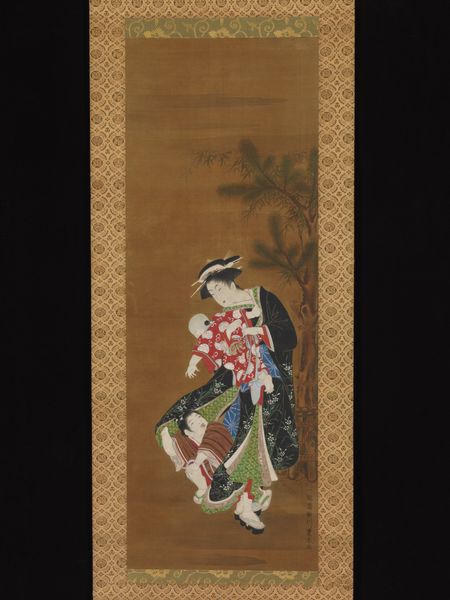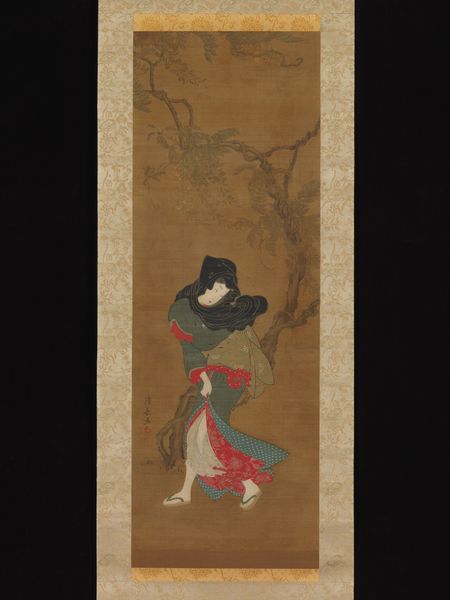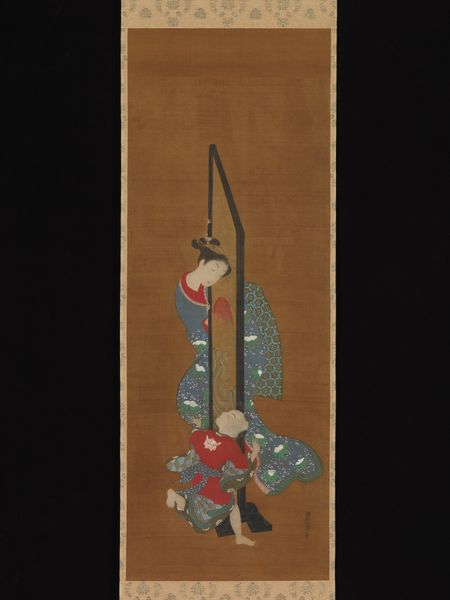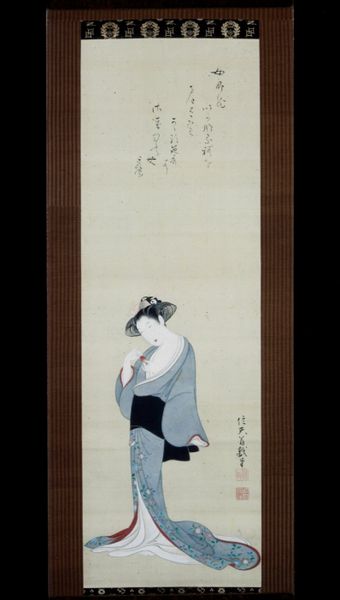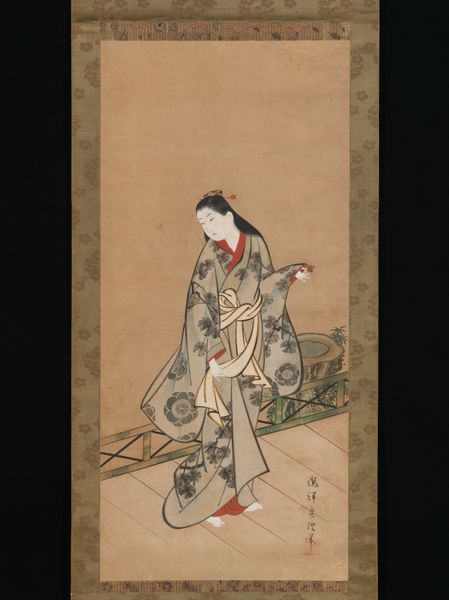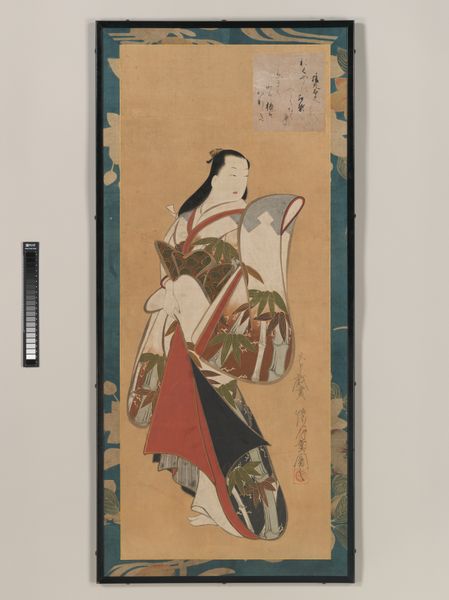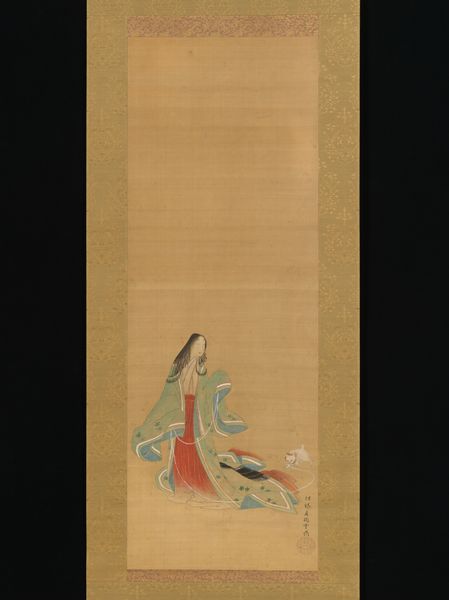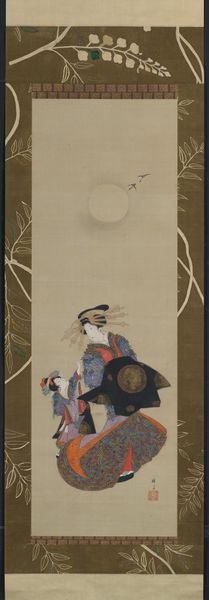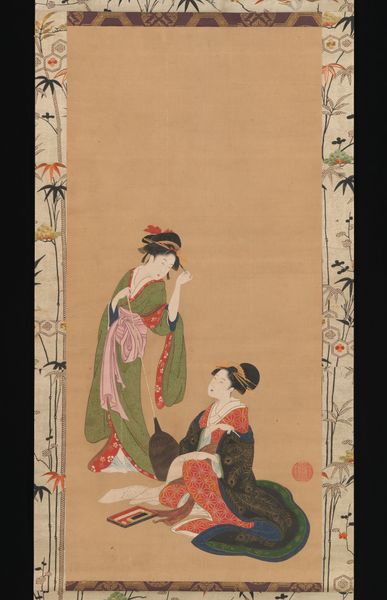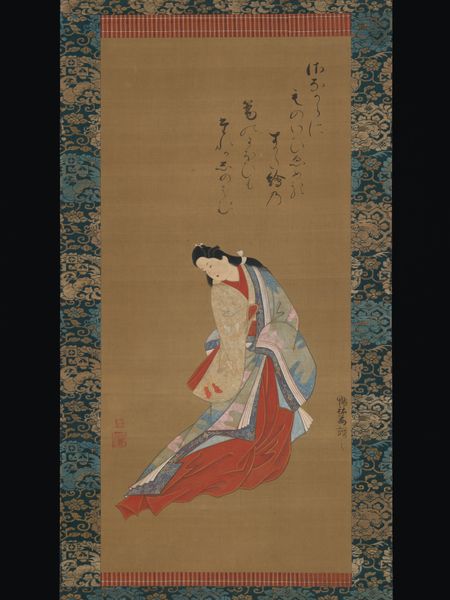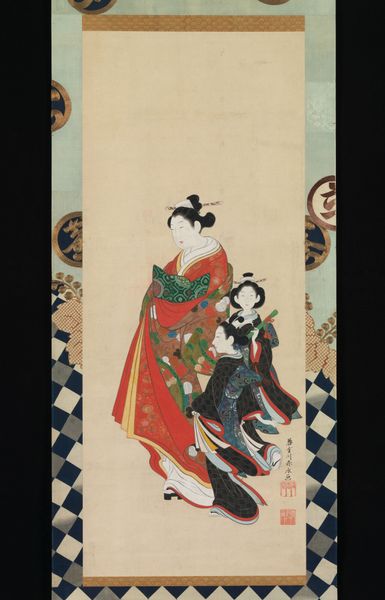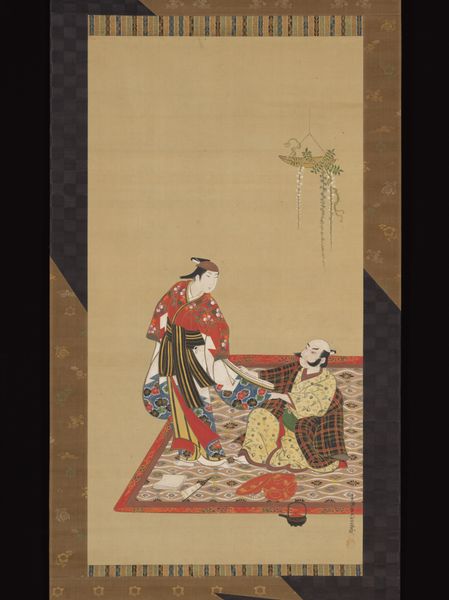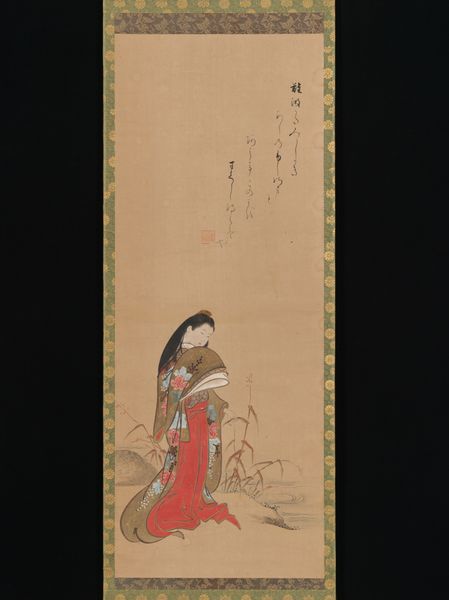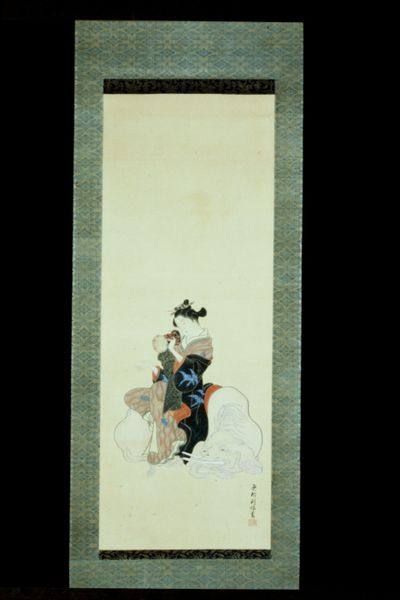
painting, paper, hanging-scroll, ink
#
portrait
#
muted colour palette
#
painting
#
asian-art
#
ukiyo-e
#
japan
#
paper
#
hanging-scroll
#
ink
#
erotic-art
Dimensions: 29 1/8 x 11 7/16 in. (74 x 29 cm) (image)63 x 15 3/8 in. (160 x 39 cm) (mount) 44 cm W w/roller
Copyright: Public Domain
Editor: Here we have Tsukioka Settei's "Prostitute Standing by Willow Tree," made around 1775 using ink and color on paper as a hanging scroll. There's something quite melancholic about this image, perhaps because of her sidelong glance and the drooping willow. How do you interpret this work? Curator: This image offers a poignant lens into the social fabric of 18th-century Japan. Works like this were categorized as *ukiyo-e*, or "pictures of the floating world." How might we understand "the floating world" as it relates to the woman depicted? Editor: Perhaps as a world of impermanence and fleeting pleasures? And how this woman, identified as a prostitute, occupies a precarious space within that world? Curator: Precisely. The *ukiyo-e* genre often romanticized, but also, importantly, objectified women within specific roles, like that of courtesans or geishas. What does it mean to consider this a portrait? Editor: So, the title assigns this identity, but this could also be any woman. The artist both acknowledges and perhaps critiques her position through the soft color palette and the melancholic pose? Curator: It also raises questions about class and social mobility for women in that era. The willow tree itself is often interpreted as a symbol of suppleness, and grace, but also of bending and adapting, a possible reflection of her profession's demands. How do we reconcile the inherent tension between aesthetic appreciation and critical awareness in viewing such art? Editor: I see it now as both an aesthetic object and a commentary on the woman’s societal role at the time. Thank you! Curator: And I, as well. It encourages us to consider the complex layers of representation, identity, and power dynamics embedded within art historical contexts.
Comments
No comments
Be the first to comment and join the conversation on the ultimate creative platform.
